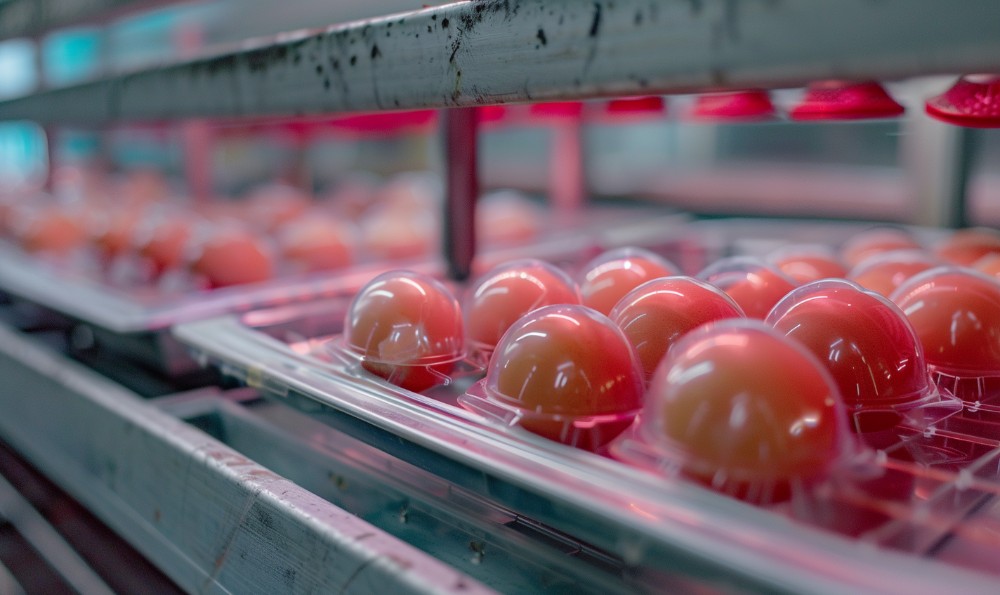Understanding HOCl Generators
Understanding HOCl Generators: Applications, Technology, and Benefits
Hypochlorous acid (HOCl) is a powerful and versatile disinfectant with numerous applications in both industrial and domestic settings. The generation of HOCl, especially through advanced technologies, has garnered significant attention due to its effectiveness in various fields such as sanitation, water treatment, and medical applications. This article delves into the intricacies of HOCl generators, exploring their mechanisms, benefits, applications, and future prospects.

1. Introduction to HOCl
Hypochlorous acid (HOCl) is a weak acid that occurs naturally and is a potent disinfectant and oxidizing agent. It is formed when chlorine dissolves in water, wich then reacts with water molecules. HOCl is highly effective against bacteria, viruses, and fungi, making it a valuable agent in disinfection and sanitation.
1.1. Chemical Properties
HOCl is a weak acid with a pKa value of approximately 7.5, which means it is effective over a broad pH range. Its chemical formula is HOCl, and it is often found in equilibrium with its conjugate base, hypochlorite ion (OCl⁻), in aqueous solutions. The effectiveness of HOCl as a disinfectant is attributed to its ability to penetrate microbial cell walls and disrupt cellular processes.
1.2. Formation and Stability
HOCl can be generated through the electrolysis of a salt solution or by reacting chlorine gas with water. The stability of HOCl in solution depends on factors such as pH, temperature, and concentration. Typically, it is more stable in slightly acidic conditions, which can be maintained using pH buffers.
2. Mechanisms of HOCl Generation
The generation of HOCl involves various technologies and processes. Understanding these mechanisms is crucial for optimizing HOCl production and application.
2.1. Electrolytic Generation
Electrolytic generation of HOCl involves passing an electric current through a solution of salt (usually sodium chloride, NaCl). This process, known as electrolysis, splits the salt into sodium and chloride ions. The chloride ions react with water to form HOCl. The reaction can be summarized as follows:

Electrolytic systems are favored for their on-demand production capabilities and ability to adjust the concentration of HOCl based on specific needs.
2.2. Chemical Reaction with Chlorine
Another method of HOCl generation involves the direct reaction of chlorine gas (Cl₂) with water. This process produces HOCl and hydrochloric acid (HCl):

This method is commonly used in large-scale water treatment facilities due to its simplicity and effectiveness in producing large quantities of HOCl.
3. Applications of HOCl Generators
HOCl generators have a wide range of applications across different industries. Their ability to provide a safe and effective disinfectant makes them invaluable in various settings.
3.1. Water Treatment
In water treatment, HOCl is used for disinfection and purification. It is highly effective in killing pathogens, including bacteria, viruses, and protozoa, making it ideal for both municipal and industrial water systems. HOCl generators can be used to maintain safe drinking water and treat wastewater, ensuring compliance with health and safety regulations.
3.2. Healthcare and Medical Facilities
In healthcare settings, HOCl is utilized for disinfecting surfaces, medical instruments, and wound care. Its efficacy in destroying pathogens without leaving harmful residues makes it suitable for sensitive environments like hospitals and clinics. HOCl generators provide a constant supply of this disinfectant, enhancing the overall hygiene and safety standards in medical facilities.
3.3. Food and Beverage Industry
The food and beverage industry uses HOCl for sanitizing equipment, surfaces, and even for washing produce. Its use in food processing helps to reduce the risk of foodborne illnesses and extends the shelf life of products. HOCl generators are employed to ensure that food safety standards are met effectively.
3.4. Agriculture and Horticulture
In agriculture, HOCl is used for disinfecting irrigation systems and controlling plant diseases. It helps in maintaining a clean growing environment and reducing the need for chemical pesticides. HOCl generators support sustainable farming practices by offering a more environmentally friendly alternative to traditional disinfectants.
4. Benefits of Using HOCl Generators
HOCl generators offer several advantages over traditional disinfecting agents. These benefits contribute to their growing popularity in various sectors.
4.1. Safety and Non-Toxicity
HOCl is less toxic compared to other chlorine-based disinfectants, such as bleach. It does not produce harmful by-products and is safe for use around humans and animals. This makes it an ideal choice for environments where safety and health are priorities.
4.2. Environmental Impact
HOCl is environmentally friendly because it breaks down into harmless substances—mainly water and salt. Unlike other disinfectants that can leave harmful residues or contribute to environmental pollution, HOCl’s decomposition products are non-toxic and do not harm ecosystems.
4.3. Cost-Effectiveness
HOCl generators provide a cost-effective solution for generating disinfectant on-site. The initial investment in the equipment can be offset by the reduced costs of purchasing and storing chemical disinfectants. Additionally, on-site generation minimizes the need for transportation and storage of hazardous chemicals.
4.4. On-Demand Production
One of the significant advantages of HOCl generators is their ability to produce disinfectant on demand. This ensures that the concentration and volume of HOCl can be adjusted according to specific needs, enhancing operational flexibility and efficiency.
5. Challenges and Limitations
Despite their advantages, HOCl generators face certain challenges and limitations that need to be addressed to optimize their performance.
5.1. Maintenance and Operation
HOCl generators require regular maintenance and monitoring to ensure optimal performance. Electrolytic cells, in particular, need to be cleaned and maintained to prevent scaling and degradation. Proper training is also required for operators to manage the equipment effectively.
5.2. Initial Costs
While HOCl generators offer long-term cost savings, the initial investment can be significant. The cost of purchasing and installing the equipment may be a barrier for smaller operations or facilities with limited budgets.
5.3. Concentration Control
Maintaining the desired concentration of HOCl can be challenging, especially in large-scale applications. Variations in water quality, temperature, and other factors can affect the efficiency of HOCl generation. Advanced control systems and regular monitoring are necessary to ensure consistent disinfectant levels.
6. Future Trends and Innovations
The field of HOCl generation is evolving with advancements in technology and research. Several trends and innovations are shaping the future of HOCl generators.
6.1. Integration with Smart Technologies
The integration of smart technologies and automation is enhancing the efficiency and functionality of HOCl generators. Smart sensors and control systems enable real-time monitoring and adjustment of HOCl concentration, improving accuracy and reducing the need for manual intervention.
6.2. Development of More Efficient Electrolytic Cells
Research is focused on developing more efficient electrolytic cells that offer higher production rates and longer service life. Innovations in electrode materials and cell design are expected to improve the performance and cost-effectiveness of electrolytic HOCl generators.
6.3. Expanded Applications
The versatility of HOCl is leading to new applications and use cases. Ongoing research explores its potential in areas such as air purification, personal care products, and more. As the technology matures, it is likely to find applications in additional sectors, further demonstrating its value.


7. Conclusion
HOCl generators represent a significant advancement in the field of disinfection and sanitation. With their ability to produce a powerful and safe disinfectant on demand, they offer numerous benefits across various industries. While challenges remain, ongoing research and technological advancements promise to enhance the efficiency and applicability of HOCl generators in the future. As we continue to prioritize safety, environmental sustainability, and cost-effectiveness, HOCl generators are poised to play a crucial role in maintaining high standards of hygiene and health.
